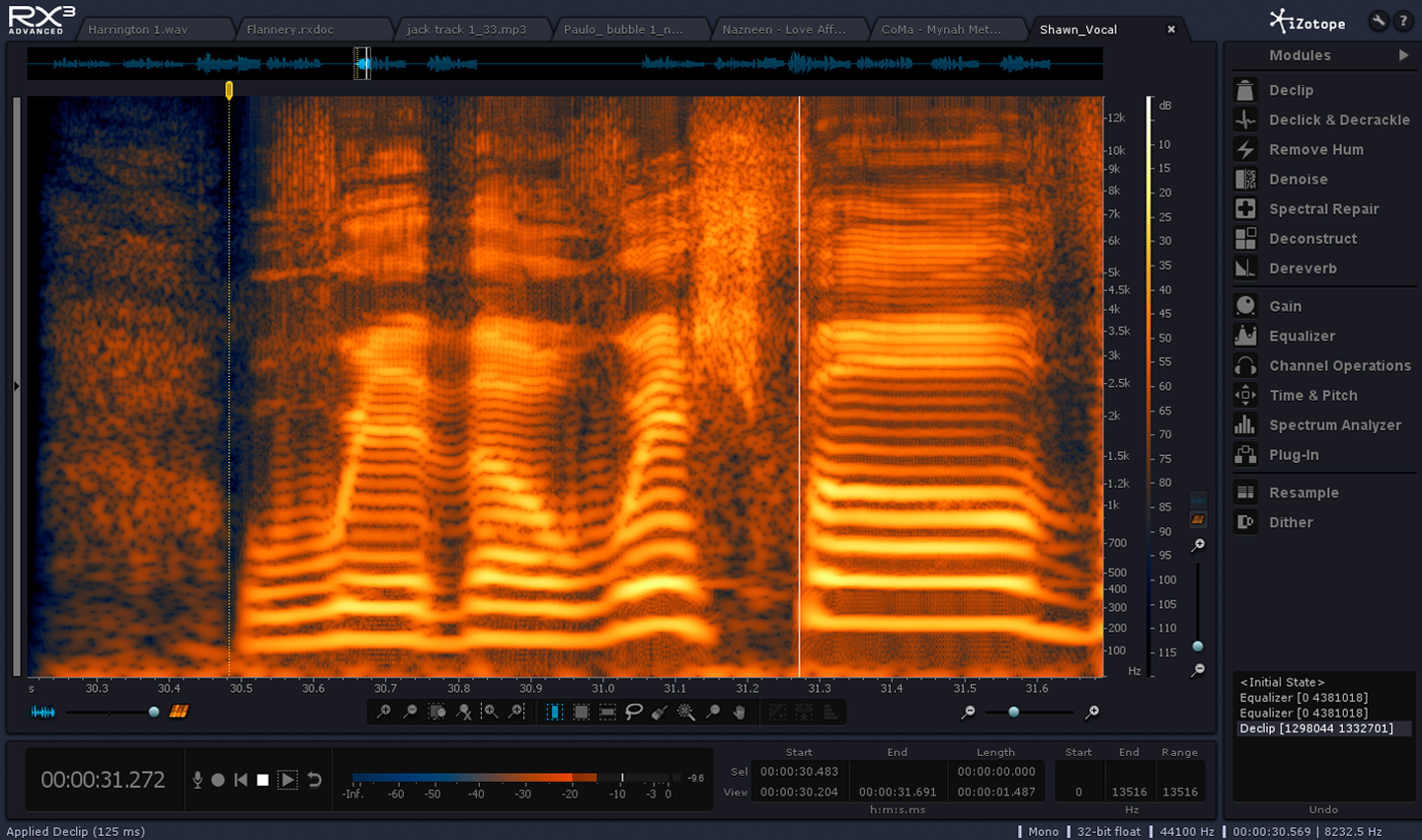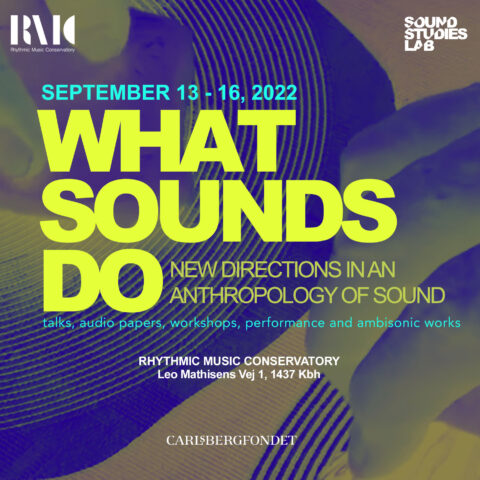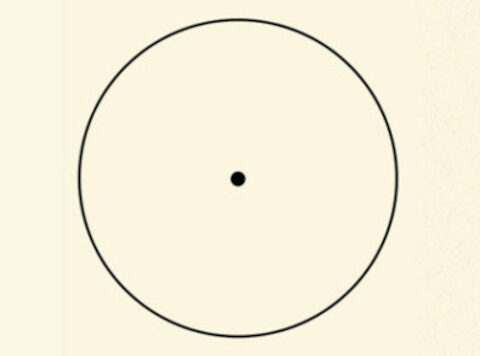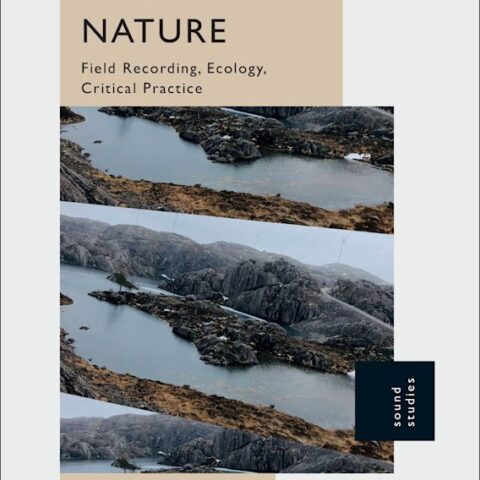
Some months ago, iZotope released a brand new version of RX, an audio repair toolkit charged with lots of great tools for dealing with audio material.
In the new version, RX added new modules such as Dereverb, realtime dialogue denoiser, new metering suite and advanced features on already stablished modules such as parametric EQ, declip, declick, time&pitch, channel operations, dither, among others. Also, the application works x6 faster than the previous version and has a pretty solid performance since supports multi-core processing and includes some optimized algorithms. Other great features are also found in the new interface, which is more easier to navigate and also integrates support for working with multiple files in one instance of the program, which allow to make comparisons of sounds without needing to close a project to open the other.
I like RX a lot and I use it mainly for field recording, and with this new version, I thought about doing a small review (or maybe just a commentary or reflection) on it, maybe trying to find its spirit and what’s make it unique or special, rather than talking about tips, tricks or showcasing more examples of it. I’ll try to briefly talk about the things I find interesting on it for field recording and listening purposes, rather than just talking about stuff you find in the manual, on another reviews (like here, here and here), the great videos at iZotope’s site, or the fantastic 100-page audio repair guide iZotope recently released. Also, I’m not interested on showing you radical examples of repairing and processing since you can also find that on the iZotope’s site. Although I certainly use RX for audio repairing stuff, I think this tool is more than that. For me, RX works as a microscope of sounds, a powerful tool capable of amazing things, not only on repairing but also in terms of how we relate with sound and how technology can help us to understand, explore and find new things in the audible information we capture and deal with.
Nowadays, RX is not alone although it still offers things you only find there, at least in such advanced ways. There are other similar spectral analysis tools which can do a lot of things over the material, but I chose RX maybe because of the detail and the workflow I’ve found with it, which in this new version gets really enhanced. This software could be something like a Photoshop for sound, a complete suite of restoration and meticulous processing of digital audio. I work with sound recording, composing and research, and field recording plays an essential role in my work, and when it comes to material captured in this vast sonic terrain we live, a tool like RX becomes an awesome odyssey of listening.
With RX you can analyze, extract, isolate, repair, shape, transform, visualize, combine and change not only any kind of recording, but also anything you find on it. You have waveform view, spectrogram, sonogram, meters of all kinds and a very cool way of integrate them together, getting a visual canvas full of information which can be configured in custom ways (colors, resolution, sizes, combination of waveform and spectra, etc). That thing alone is something iZotope does pretty well. Their analysis and visualization algorithms are superb and the tools provided for it, such as the scope and the magnification options makes the process very interesting. I found that RX3 is much faster when zooming and approaching to pretty detailed and microscopic elements of material. It’s like navigating into an ocean of harmonics.
The most interesting thing I found in RX its the architecture, the solidity of their algorithms, something that iZotope’s is very know for. I find that here at RX3, several of the optimizations and new features are actually a result of previous experiments and hard programming efforts done with other products of the family, such as Ozone or Iris. That is something you find everywhere in the program and I guess it is one of the things that makes this interesting and deep, that you’re not only facing an evolution of the tool itself, but also a reflection of the work the company has been doing on other products and what they’ve learn from their own algorithms, which actually is what makes RX to reach its true potential.
And of course, as with any kind of software, the true potential and unique applications are often unknown until the artist/user comes into action, since it’s the user who brings their creativity into it. I think this is a relationship that programmers and software could cultivate more: the interaction with the users and the ways they work with technology. Many of the great audio companies have made amazing pieces of software and hardware not only based on their ideas, but also on the reaction and uses of the people who buy the tools. In the case of audio repairing solutions in particular, there has been a wonderful exploration of these tools, where for example, there are lots of people who exaggerates the processes or use the “noise only” detritus creatively, making the unwanted wanted, working with “errors” as valuable aesthetic elements you can put in a chain of processes and obtain really beautiful results from.
It’s something like thinking about the inventor of the microscope. Maybe he didn’t necessarily know exactly the extent and uses of his invention but he surely knew it was something big. Here is the same, since when you use RX in a more exploratory way, it feels like a laboratory where experiments have not yet occurred, where the tool provides a powerful element pretty simple and direct, but wonderful when listening to it. For me, it is amazing to just analyze, visualize and/or listen to the material using the tools provided. More than valuing audio technology as a simple and material tool, we can look for a deeper experience and be conscious of what it actually represents for our listening experience. Any kind of digital tool nowadays is a bridge between diverse and exotic worlds of sounds, not only a way of creating, composing, publishing and reproducing audio, but also ways of feeling it, imagining things from it, listening.
With RX specially, you can easily start to get amazed with the huge amount of possibilities when working with audio in different ways. That’s because of the way RX is designed, where you can even do free-hand drawing over the visual representation of the recordings, you can select specific elements of the material, you can extract specific points, or maybe delete them, replace them, enhance them, transform them or just listen to different extractions and parts. This is actually very didactical and nutritive experience not only for people who works with sound but anyone with ears. Sound tends to be a very massive texture of information, a huge network of possibilities. In the half of a second, a universe of sonic information takes place and the fact of being able to explore sound in such scales, stretch time to go deeply or just the possibility of listening to different ranges of sound objects over space-time, is a fascinating experience. And well, we do that all the time, since almost any kind of digital audio tool these days is built from the microsound level, but there’s some magic at RX that I particularly enjoy.
I find it almost alchemical, like dealing with complex states of energy in both technical and intuitive ways. It’s a way of altering sonic matter in forms you can’t easily imagine until you get the tool and go deep with it. Such detailed sonogram and the ability of processing the material in any dimension (time, frequency and/or intensity) provide deep analysis and information of grains, objects, soundscapes and any kind of audible material in whatever the time scale is. It is possible to do very precise changes over the sounds, being able to not only research and study them, but also go into what’s “inside” them. Is a microsonic adventure, where objects are spaces of micro-objects, timbres are actually wonderful networks of harmonics, and the illusion of space is malleable, always dependen on those three factors. And of course that’s something you can find in sound generally, but here we can not only think about those features, but also alter and transform them, opening lots of possibilities.
I’ve personally have had amazing experience with students of assistants to workshops, since when starting to work with sound, they find very difficult to create some concepts in their minds. For example, in a recent listening and field recording workshop I did here in Medellin, the sonogram was something very useful when trying to explain some complex concepts such as timbre, time dimension and how is sound matter related in order to create an illusion of space. The traditional board and marker gets useless vs. something like RX for example. Students can make a better understanding of not only technical and scientific aspects of sound, but also in a philosophical and perceptive way. For example, when analyzing the field recordings we capture, is possible do identify different elements, do isolate listening of them and explore the material in different time scales, which is often hard to understand in other ways, but with tools like RX it gets pretty easy.
In RX the spectrogram is more than a visualization, since you can go directly into it and draw, select and play with the elements inside it. That is something I find very special, since it makes the sonogram a fully interactive interface where you not only see things, but also change them and dissect them in different ways. It’s similar to the sensation you get with an EQ that features an spectrogram behind. The visual feedback of what’s currently going on, creates a different experience of altering and finding the frequencies to alter. In RX you get something like that, but in deeper ways, being able to select single harmonics or going to millisecond ranges to extract and find elements that you can process using plugins and integrated modules or just exporting it for working in another software or task.
Obviously RX works wonderfully with musical instruments, melodic material, noise removal tasks, unwanted effects and any cleaning task needed, but it really has a huge potential to what’s beyond those tasks. Here at Sonic Terrain our interest lies mainly in the use of this kind of tools for field recording tasks, such as cleaning stuff, removing unwanted elements that arise when recording, enhance specific objects or soundscapes, extract microsounds or specific aspects of a capture, work over different elements of a sound effect, visualize and understand in detail events that occur over time, among many other things. But you can also alter your field recordings in very extreme ways, where the tool becomes almost infinite, pretty open, like a portal of audible surprises.
I am a big fan of spectral processing tools and although there are alternatives that allow similar uses, they can’t be really compared to the depth of RX. I’m also user of Iris for example, which has a similar architecture but is much more oriented to creative uses, to discover new sounds from various processes and design new textures from any kind of source. It is more dynamic and more performance-oriented, since it has a sampler-keyboard style and allow to combine several sounds at the time. However, the way RX shows and processes the material is deeper and more advanced, more dedicated to surgical work, as if you have hi-tec “lenses” to approach the sound in detail, plus having scalpel, scissors, eraser and over thirty tools able to transform, remove, repair, alter, isolate, enhance or mitigate certain event that is occurring at microscopic levels. The fact of being able to go directly to the sonogram and work with sound on milliseconds, harmonics, decibels, and with such accuracy, opens the posibilites of what we can reach and provides access to a microcosm within the object, a hidden universe on anything you can record.
When experimenting with RX3, I found some stuff I really loved, not only new features but in general about the program:
- Radius algorithm is something I haven’t found in other time&pitch processing tools. It can get pretty extreme and you can’t notice artifacts and bad stuff. I love, for example to listen to frog chorus, insects or even a busy traffic afternoon. There are modes that can take time when doing offline processing, but the results worth it for me. It obviously depends on the material, but with small fragments is very fast.
- The spectral repair system is fantastic. I can’t stop of being amazed with the results it gets. And in the advanced edition of RX, it features a multi-resolution mode which makes things more interesting.
- The ways you can select the material are really wonderful. I particularly love two: the lasso and brush tools which allow to do hand-free drawing over the material to select it and also the magic wand tool, an intelligent system that select harmonic content precisely.
- The undo history works great, saving all the processed stages and allowing you to go back to any kind of process you’ve done with a single file.
- There’s a fantastic module called deconstruct which is really interesting when working with field recordings. The tool is simple, allowing to separate what they call tonal and noisy content and being able to reduce the levels on both sides or manipulate the balance between.
- Tools like the spectral repair module, the dereverb module, declick and decrackle effects and the hum removal processor have wide and advanced options which besides being able of doing a really good job in their normal tasks, they allow you to go extreme and use them creatively to get some weird and adventurous results.
- The new feature of allowing several sound files to be loaded and organized in tabs works pretty nice with the modules, since they get loaded in independent windows, allowing the same module to be used on different tabs/files
- As I said before, zooming is now faster and the resolution you get is really nice.
And of course, some things I would love to see in future updates, maybe not really necessary but something that pops out in my mind:
- A dedicated plugin chain (you can only open one plugin at time) or at least the possibility of loading several plugins in different windows and process them easily, similar to the multiple AudioSuite feature in Pro Tools.
- The tab system could get some improvements, such as the ability of detaching tabs for comparison or being able to visualize and work over several sounds in the same window, similar to the workflow of a web browser for example, where you can have a window with several tabs, but you can also make each tab a window and resize it as you want.
- Although RX is not meant to be an audio editor, it would be nice to have an easier way of doing common editing tasks such as fades, crossfades, cuts, etc. It does many of them, but not in the way an audio editor does it. I think many users of RX would love this.
- Maybe this would be to ask too much but multi-track support would be very nice
Links
Review @ MacProVideo
Review @ MusicTech





